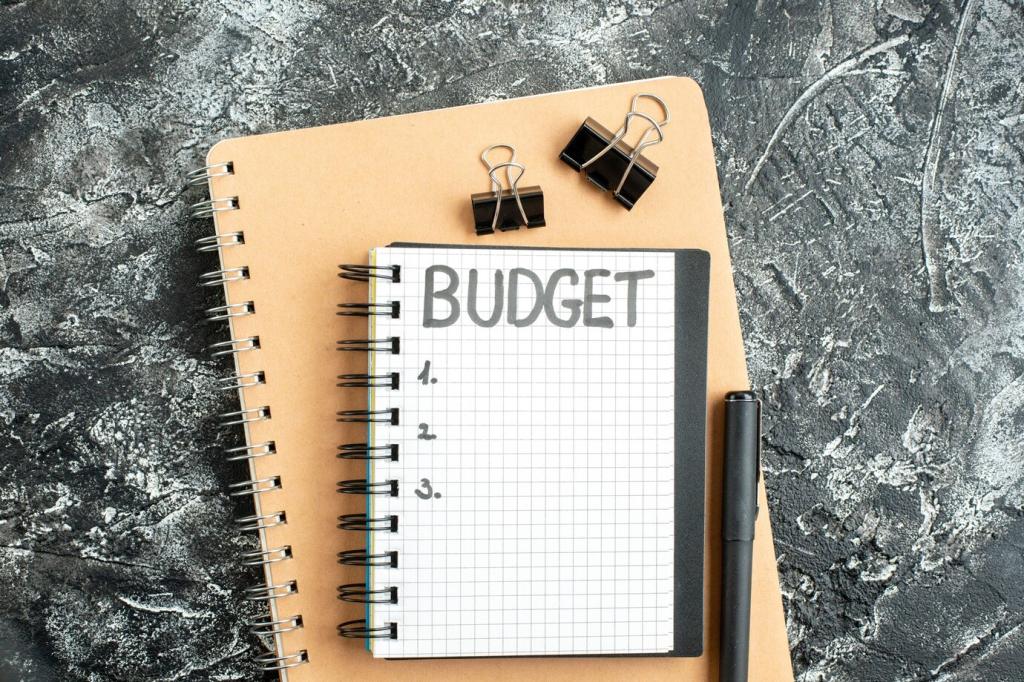
Algorithm-driven Strategies for Personal Budgeting
Chosen theme: Algorithm-driven Strategies for Personal Budgeting. Welcome to a warm, practical tour of smart money habits powered by data, gentle nudges, and transparent methods you can understand, adjust, and make your own. Subscribe, comment, and help shape a budget that learns alongside your life.
Gathering Clean Inputs
Great budgeting starts with great data. Import bank transactions, remove duplicates, split shared purchases, and standardize merchant names so algorithms don’t confuse ‘SuperMart #12’ with ‘Super Mart.’ When inputs are trustworthy, your personal budgeting model can actually reflect your real life.
Feature Engineering for Real Life
Beyond categories, enrich each transaction with features: weekday versus weekend, needs versus wants, seasonality tags, and recurring-bill markers. Algorithm-driven strategies for personal budgeting thrive on these signals, revealing patterns humans feel but rarely quantify, like late-night impulse orders or monthly spikes before payday.
The Coffee Conundrum Story
A reader noticed constant cash shortages by Thursday. Our simple clustering flagged weekday café stops near their office as a subtle budget leak. By batching coffee with a prepaid card and reducing weekday frequency, they saved enough each month to fast-track emergency savings—without losing joy.
Algorithmic Envelope Allocation
Start with a zero-based mindset: income minus planned expenses equals zero, on purpose. Let a solver allocate dollars across envelopes under constraints you define—rent first, minimum payments protected, groceries capped, giving reserved. You keep the principles; the algorithm simply crunches thousands of micro-decisions instantly.
Algorithmic Envelope Allocation
Prioritize goals using weights that reflect your values: emergency fund, debt payoff, travel, education. A linear program can maximize total satisfaction while respecting hard limits. Adjust weights and watch allocations shift transparently, teaching you how small preference changes alter real dollars and timelines.


Forecasting Cash Flow with Time Series
01
From Noise to Signal
Smooth volatile spending with moving averages and exponential smoothing to reveal true trends. Filter out one-off spikes so you don’t over-correct. When your forecast reflects typical patterns, mid-month cash timing, and paycheck cadence, you’ll plan confidently and stop scrambling when a predictable bill arrives.
02
Bill Calendars Meet Models
Combine a bill calendar with forecasts to visualize cash dips and surges. Align auto-pay dates with paychecks, simulate shifting subscriptions, and preview the next six weeks. If this helps you breathe easier, subscribe and tell us which view—timeline or envelope—makes your decisions feel clearest.
03
Monte Carlo for Rainy Days
Simulate thousands of possible months using ranges for groceries, gas, and side-hustle income. The result is a confidence interval for your ending balance. Set buffer sizes on probabilities, not vibes, and learn how often your plan survives surprises without touching the emergency fund.
Detecting Budget Leaks with Anomaly Detection
Blend simple rules with statistical flags to spot unusual spending by category and merchant. Z-scores highlight outliers; isolation forests surface weird patterns across multiple features. You review alerts, confirm what’s legitimate, and refine thresholds so signal grows while noise fades.


Detecting Budget Leaks with Anomaly Detection
Detect stealthy renewals by matching periodicity and merchant fingerprints. A reader’s forgotten ‘free trial’ resurfaced after a detection model saw perfect 30-day spacing. They canceled, then reallocated that quiet leak toward a sinking fund for yearly expenses, avoiding the dreaded renewal pile-up.
Behavior Design Meets Algorithms
Trigger nudges when patterns predict trouble: grocery overspend pace, weekend dining spikes, or low-checking warnings. Keep prompts friendly, actionable, and sparse. A well-timed suggestion to move twenty dollars into transit can prevent an overdraft and keep your streak of wins intact.

Behavior Design Meets Algorithms
Experiment with wording, timing, and channel. Do morning or evening prompts work better? Does a progress bar or simple text drive stronger results? Track outcomes like reduced variance or higher save rates. Share your experiments and we’ll feature standout results to inspire the community.
Privacy by Design
Prefer on-device processing when possible, encrypt data in transit and at rest, and minimize retention. Offer clear data controls and an export button. If a privacy checklist helps you adopt these ideas, subscribe and we’ll send a friendly, non-technical guide you can keep.
Fairness and Explainability
Avoid rules that disadvantage irregular income earners or caregivers. Provide explanations for allocations and alerts: why this envelope shrank, why that charge flagged. Explainability builds confidence—and confident budgets are the ones people actually follow when life gets beautifully messy.
